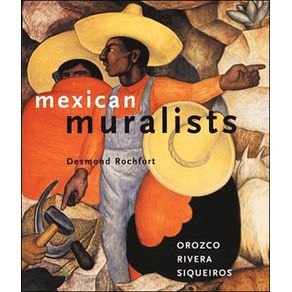In Mexico in the early 1920s, a growing, collective social consciousness gave rise to a revolutionary furor focused on liberating the country's workers from harsh conditions and poverty. In 1921, Mexican artists Diego Rivera, José Clemente Orozco, and David Alfaro Siqueiros were all commissioned by the government to create educational paintings on the walls of public buildings. After that initial experience, they devoted themselves almost exclusively to painting these large-scale murals--forming the foundation of a movement that would last 50 years. The muralists' work took up the themes of society and revolution. Often the paintings depicted historical vignettes like the story of Cuernavaca and Morelos crossing the barranca, or Mexico's ancient Indians. They satirized contemporary society, created ideal visions of peaceful families, and built up dark, imposing industrial cityscapes then leveled them by depicting the debauchery and death of the capitalist industrialists. The paintings themselves reflect diverse artistic influences--surrealism, cubism, and illustration, most notable among them. Their bold colors and strong imagery practically bound out of the 150 color plates in this book. Mexican muralist and scholar Desmond Rochfort lucidly traces the development of the movement to place the work in context and provides a solid history of each of the artists' social and artistic influences. This is an excellent overview of work that should appeal both to fans of the individual artists and Mexican art in general.



